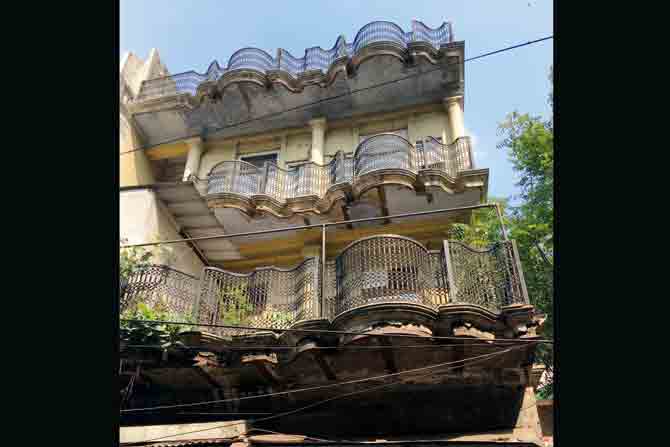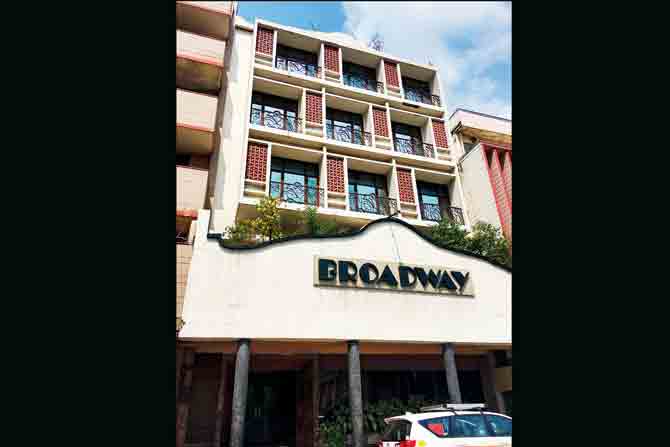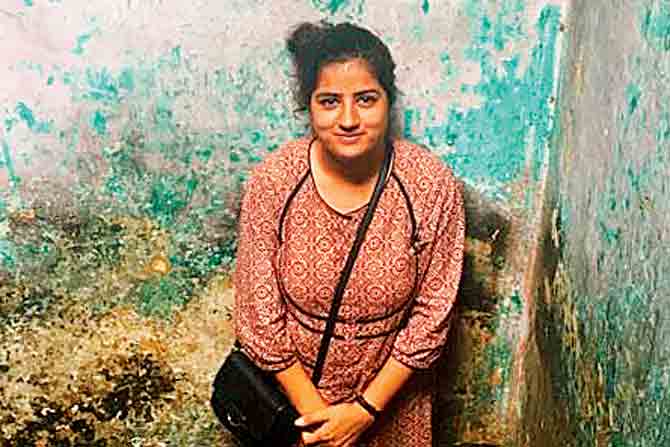A young architect is taking a leaf out of Mumbai to archive and preserve the last remaining Art Deco-inspired structures in the quaint gullies of the capital

A residence in Daryaganj, along Ansari Road, incorporates Deco elements. This one has a boat-shaped ornament that crowns its top, and an angled elevation, along with eyebrow details, and classic horizontal and rounded windows resembling elements of a ship
The story of Art Deco in India, was different for every city. It was in Mumbai, then Bombay, where this architectural movement took root, blossoming through the early 19th century, due to the generosity of princely statesmen, merchants and entrepreneurs, who saw it "as an expression of their love for contemporary ways of living". It gradually spread to other cities, including Delhi, where it made a place of its own, and in some cases, as a mix of styles under the purview of Indo Deco.
Delhi-based architect Geetanjali Sayal is hoping to document and examine the capital-s tryst with the style, in an ongoing research and digital archival project, Deco in Delhi. Sayal, who is the founder of Dreamwoven Collective, a collaborative platform for people to create design interventions across multi-disciplinary backgrounds, started the project last month, in an attempt to examine Art Deco-s complex relationship with the cultural and geographical landscape of Delhi. "I have always been interested in relooking at heritage, particularly the kind of heritage that people also live in and with. Art Deco is the best example of that. It is at the intersection of something interesting and neglected, yet, habitable. When the [Deco] movement came into fruition [in Delhi], it was the first time that locals, across classes, after going through so many political transitions, could participate in adapting a certain kind of architecture. This wasn-t common earlier," says Sayal, who has a Masters in Narrative Environments from Central Saint Martins, University of the Arts, London. This style, she says, also laid the foundation for modernist and brutalist architecture.
ADVERTISEMENT

A balcony of a building on Ansari Road with intricate detailing on the grills
The results were a mixed bag. Unlike Mumbai, where the swirling geometry of structures, free-flowing patterns on grills and railings, and eyebrows on windows, were very pronounced, Delhi, where Art Deco emerged much later, had fascinating inter-relationships with other styles of architecture—Indo-Saracenic and Neoclassicism, says Sayal. "There is this haveli in Chandni Chowk that my collaborators, Prashansa Sachdeva and Tulika Shrivastava, found. When I looked at the pictures, I realised that the exterior structure cannot really be called Art Deco. But when you look at the patterns on the staircase, fireplace, and certain motifs inside the house, it does reflect certain Deco patterns. Similarly, the outer façade of Regal Theatre in Delhi [it shut operations in 2017] is Georgian, but when you go inside, the use of eclectic colours, the palettes, the play with form, is very Deco," the 28-year-old architect adds.
 Hotel Broadway on Asaf Ali Road is marked by a bold curve at the entrance with classic Deco typography
Hotel Broadway on Asaf Ali Road is marked by a bold curve at the entrance with classic Deco typography
Just before the national lockdown, Sayal traversed through the quaint by-lanes of Daryaganj, a neighbourhood inside the walled city of Shahjahanabad, also known as Old Delhi. She found nearly eight commercial spaces, and around 11 residences, which incorporated the Deco style, which originated in France in the early 1900s. "It-s also important to find out when these buildings came up," she shares. Sayal gives the example of Golcha Cinema and Hotel Broadway, both in Daryaganj, but on different streets. The latter-s façade is marked by a bold curve at the entrance with classic Deco typography. "These structures have simple geometry, but, what-s interesting is that both of them came up in the 1950s, at the end of the Art Deco movement. I am in the process of creating a timeline, to understand which structures came up first. I think residential buildings started incorporating Art Deco elements much before the single-screen theatres and hotels."
Where Delhi falls short, she says, is in understanding, appreciating, and preserving Deco. Sayal hopes to achieve that through this project. "We are still in the process of researching these structures. Once I have interacted with the owners of all these buildings, and their occupants, I-d like to start a website to ensure that more people participate in the conversation. If we archive these buildings, we might be able to preserve something of what-s left, because who knows how many of these structures will remain in the next few years. Most of the single screen theatres have already shut down."

Geetanjali Sayal
That-s where, she says, there-s so much to learn from Mumbai, where after a decade-long effort, the UNESCO in 2018, inscribed Churchgate-s Art Deco ensemble as a World Heritage Site. "The amount of work that has happened in Mumbai when it comes Deco, has given us a template to understand and build our own research. Unless, we understand our past, we can-t create a future."
11+8
Number of commercial and residential structures with Art Deco elements Sayal has found
Catch up on all the latest Mumbai news, crime news, current affairs, and a complete guide from food to things to do and events across Mumbai. Also download the new mid-day Android and iOS apps to get latest updates.
Mid-Day is now on Telegram. Click here to join our channel @middayinfomedialtd and stay updated with the latest news
 Subscribe today by clicking the link and stay updated with the latest news!" Click here!
Subscribe today by clicking the link and stay updated with the latest news!" Click here!







